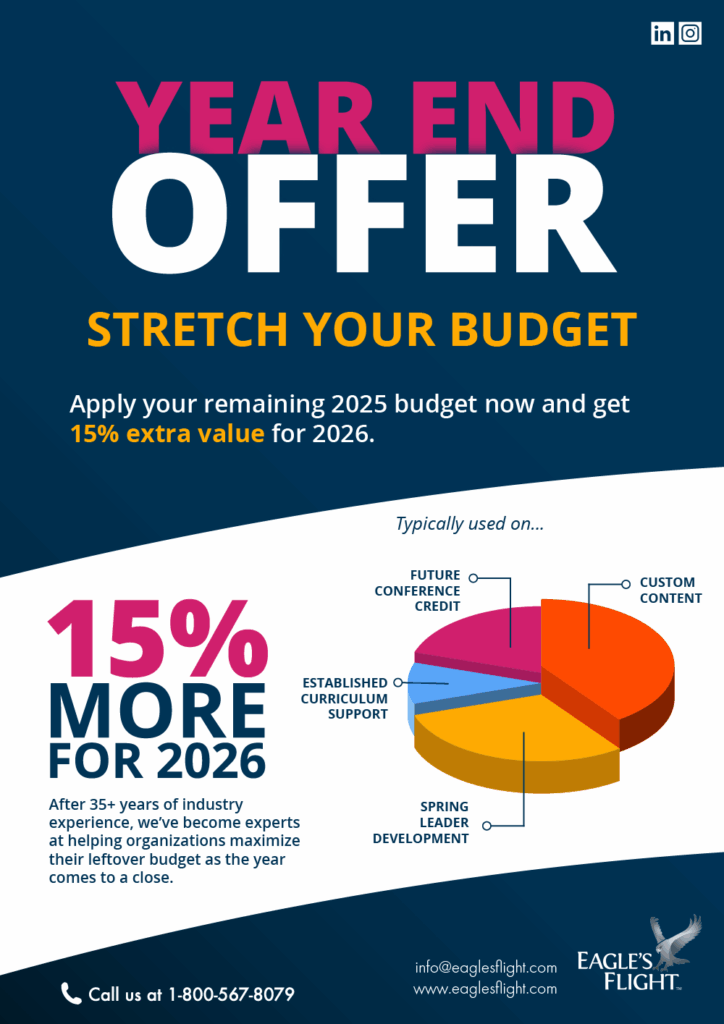The Leadership Revolution: Why Experience Trumps Content in Developing True Leaders
Leadership isn’t a spectator sport. You can’t learn to lead by watching someone else do it. Yet, many organizations still rely heavily on traditional training methods: PowerPoint decks, lectures, and one-way knowledge transfer. These often leave leaders with more information but less capability. True leadership is a practiced craft, a skill honed through action, reflection, and real-world challenge. It demands conviction, clarity, and confidence, especially under pressure. Without opportunities to try, fail, and adjust in the heat of the moment, leaders remain stuck in the realm of theory, accumulating knowledge they rarely apply.
This is a call to arms for organizations and leaders alike. It is time to flip the script. Experiential learning is not just a buzzword. It is a fundamental shift in how we develop leadership capacity. It immerses leaders in the very situations where decisions matter most, where dynamics shift, and where reflection becomes the fuel for growth. It is about creating a learning environment that mimics real life: full of uncertainty, complexity, and opportunity for breakthrough.
Who Is This For?
This message is for anyone committed to cultivating authentic, capable leaders. Whether you are a senior executive, a team manager, or a talent developer, if you believe that leadership is about more than just knowing what to do, if you understand that leadership is a lived experience, then this approach is for you. It is for organizations that want to build resilient leaders who can lead with conviction, not just competence. It is for those tired of the “knowledge dump” approach that produces followers of information but not of action. And it is for leaders who aspire to grow beyond their current capacity, who seek to step into the arena with confidence and clarity.
What Are Their Pain Points?
Many organizations grapple with the disconnect between leadership development programs and actual performance. Leaders often emerge from training sessions with a head full of concepts but without the muscle memory to act decisively when stakes are high. They are caught in a cycle of knowledge accumulation but lack the opportunity to test their skills in a safe yet challenging environment.
The pain points are clear:
- Lack of real-world application. Leaders know what they should do but struggle to translate theory into practice under pressure.
- Fear of failure. Without safe spaces to experiment, leaders hesitate, fearing mistakes that could harm their credibility.
- Stagnant growth. Traditional training tends to be one and done, leading to superficial change rather than deep transformation.
- Inconsistent behaviors. Without ongoing, experiential practice, leadership behaviors remain inconsistent, and organizational culture suffers.
- Disconnection from impact. Leaders do not see how their actions influence the broader system, leading to disengagement and disillusionment.
Why Do They Need to Action These Things?
- Build conviction. Through immersive experiences, they see firsthand the impact of their choices.
- Develop clarity. They learn to interpret complex situations and craft clear, compelling responses.
- Gain confidence. Repeated practice in simulated environments prepares them to lead effectively when it truly matters.
- Foster resilience. They learn to embrace failure as a vital part of growth rather than a setback.
How and What They Need to Do
- Create immersive experiences. Design simulations, role-plays, and scenarios that mimic real-world challenges. These should be deliberately themed to mask their connection to everyday reality. This forces leaders to bring their capabilities to bear on unfamiliar challenges. It is like preparing soil before planting seeds. You build a foundation that fosters growth.
- Use actionable frameworks. Simplify complexity with clear, practical frameworks that guide decision making in the heat of the moment. These frameworks serve as mental models that leaders can rely on when stakes are high.
- Establish safe spaces. Provide environments where leaders can test skills without fear of real-world repercussions. This safety encourages experimentation, innovation, and learning from mistakes.
- Set clear expectations. Define what success looks like in these experiences and hold leaders accountable for applying lessons learned back on the job. Reflection sessions and debriefs are essential. They turn experience into insight, and insight into action.
- Embed reflection. Encourage leaders to analyze their actions and outcomes, fostering a mindset of continuous improvement. Reflection fuels the cycle of learning, adaptation, and mastery.
Expanding the Philosophy
Leadership development rooted in experiential learning recognizes that humans learn best by doing. It is like training a muscle. Repetition, challenge, and reflection are what build strength. This approach aligns with the idea that behavior change is not driven by information alone but by full-body learning. It is an emotional and cognitive shift that redefines how leaders see themselves and their impact.
It is a philosophical stance that champions the importance of presence, engagement, and vulnerability. Leaders must be willing to step into the arena, confront their limitations, and emerge stronger. The goal is not perfection but progress: an ongoing journey of self-awareness and mastery.
In the end, the most profound leadership transformations happen not in lecture halls but in the crucible of experience. When leaders are truly tested, they discover their capacity for influence, resilience, and authenticity. That is the kind of leadership that creates ripple effects. It shapes cultures, inspires teams, and drives organizations forward.
This is the leadership revolution. Are you ready to lead differently?






